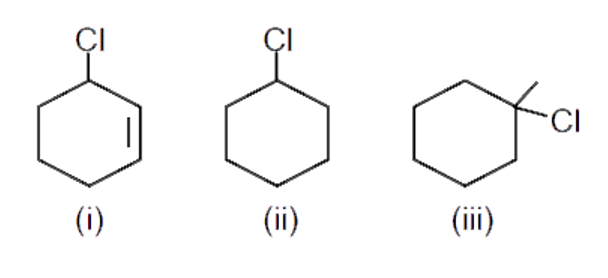The correct difference between first and second order reactions is that
a first-order reaction can be catalysed , a second-order reaction cannot be catalysed
the half-life of a first-order reaction does not depend on [A]0, the half-life of a second-order reaction does depend on [A]0
the rate of a first-order reaction does not depend on reactant concentrations, the rate of a second-order reaction does depend on reactant concentrations
the rate of a first-order reaction does depend on reactant concentrations, the rate of a second-order reaction does not depend on reactant concentrations
The correct Answer is:B
For first order reactions, the rate of reaction is proportional to the first power of the concentration of the first power of the concentration of the reactant.
For, A→B
Rate=−d[A]dt=k[A] [where,k=constant]
Half-life (t1/2=0.693k)
∴ Rate of first order reaction depends upon reactant concentrations and half life does not depend upon initial concentration of reactant, [A]0.
For second order reactions, the rate of reaction is proportional to the second power of the concentration of the reactant.
For, 2A→B
Rate =k[A]2
Half-life(t1/2=1k[A]0)
∴ Rate of second order reaction depends upon reactant concentration and half life also does depend on [A]0.
Similar Questions
Which of the following element has greatest difference between the first and second ionisation enthalpies?
View SolutionThe element having greatest difference between its first and second ionization energies, is:
View SolutionExplain why for sodium the second ionization potential is so much larger than the first, whereas for magnesium the magnitude of the difference between the first and second ionization potential is much less?
View SolutionFor a first order reaction,
View SolutionThe unit of rate constant for a second order reaction is
View SolutionThe correct order of the first ionization
View Solution
Correct order of SN2 reaction is :
View SolutionWhat is the difference between the order of a reaction and its molecularity ?
View SolutionFor the first order reaction,
View SolutionWrite units of rate constant for zero order and for the second order reactions if the concentration is expressed in mol L−1 and time in second.
View Solution
